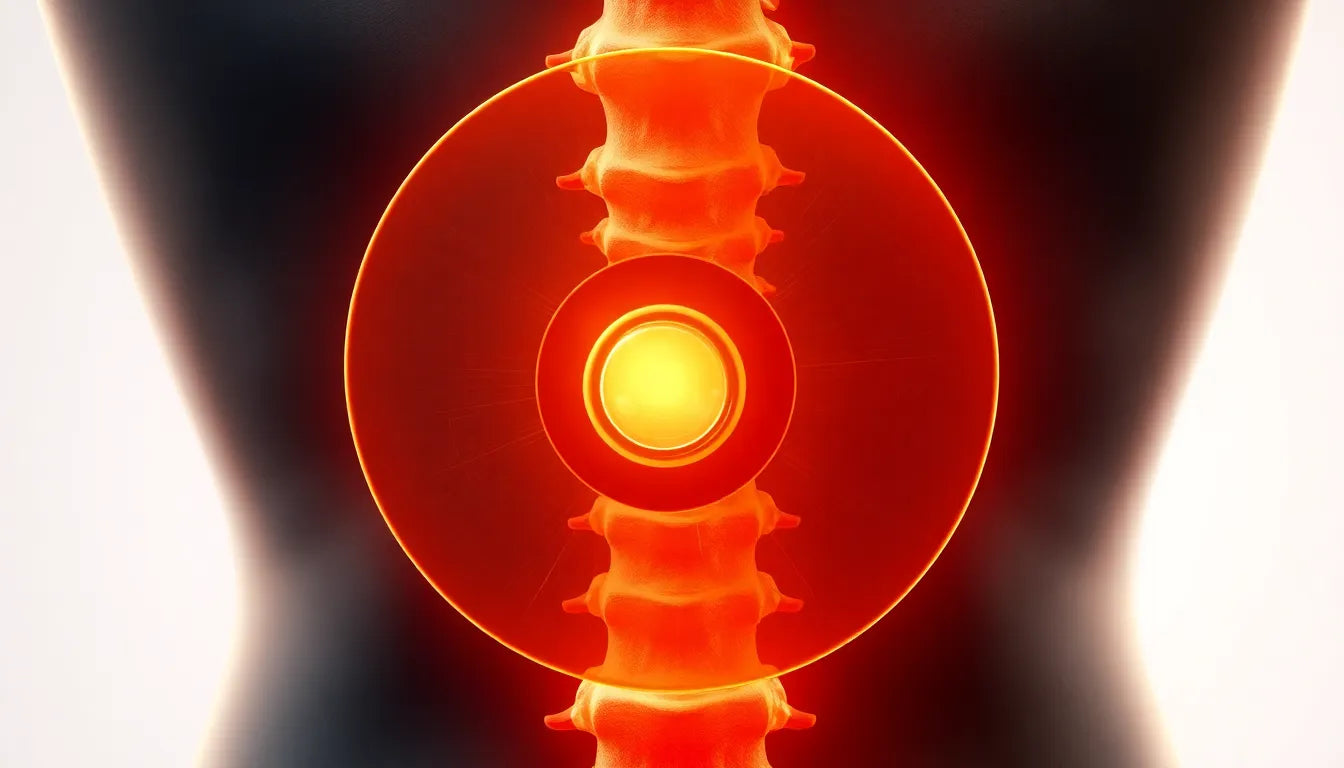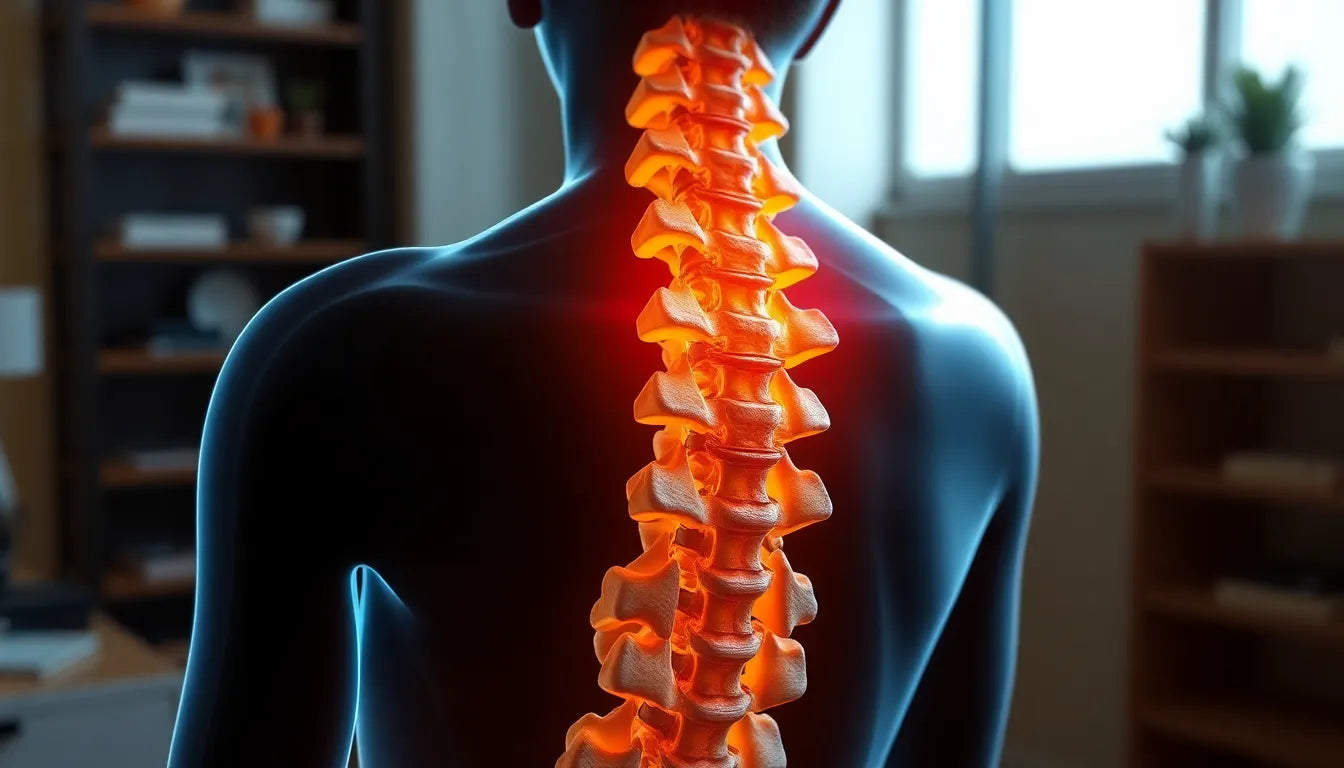A herniated disc is a common spinal condition that occurs when the inner gel-like core of a disc pushes through its tougher outer layer. This can lead to significant discomfort, often manifesting as pain, numbness, or weakness in the back and limbs. The prevalence of herniated discs is notable, affecting a large portion of the population at some point in their lives. It can severely impact daily activities, making even simple tasks challenging.
understanding the role of back support
For those suffering from a herniated disc, back support can offer a non-invasive solution to manage pain and improve mobility. Back supports are designed to stabilize the spine, reducing strain and allowing for better posture. This stabilization is crucial as it helps to alleviate the pressure on the affected discs, thereby minimizing pain and discomfort. The market offers a variety of back support options, from simple belts to advanced braces with adjustable features, catering to different needs and preferences.
the secret to pain relief
Many individuals find significant relief from herniated disc pain through the use of back supports. These ergonomic aids are not just about providing physical support; they play a critical role in pain management by promoting proper alignment and reducing unnecessary movements that can exacerbate the condition. As we delve deeper into the topic, we'll explore how back supports can be a game-changer for those dealing with the debilitating effects of a herniated disc.
understanding back support technology
When it comes to managing herniated disc pain, the technology behind back support plays a pivotal role. One of the most effective technologies is compression, which targets nerve irritation and helps reduce pain. Products like BioSkin's Vector Lumbar Support and Back Flex Lumbar Brace are designed with this in mind. They apply targeted compression to the lower back, which can alleviate the numbness and weakness often associated with herniated discs by stabilizing the affected area and promoting better posture.
benefits of adjustable tension and customization
Another critical feature of effective back support is adjustability. The ability to customize the tension of a back brace allows users to tailor the support to their specific needs, providing both comfort and efficacy. The Bracing Experts highlight top-rated options like the Bauerfeind LumboLoc Forte, which offer adjustable tension settings. This feature ensures that users can modify the brace to fit their body snugly, enhancing the brace's ability to relieve pressure on the spine and improve alignment. Customization is key to addressing the unique needs of each individual, making these braces an adaptable solution for pain management.
comparative analysis of back support options
To help you navigate the myriad of back support options available, a comparative analysis can be invaluable. Below is a table highlighting key features of popular back braces:
| Brand | Compression | Adjustability | Additional Therapies |
|---|---|---|---|
| BioSkin | High | Moderate | None |
| The Bracing Experts | Moderate | High | Heat, Massage |
| Walmart | Low | Low | None |
This table underscores the differences in product offerings. For instance, while BioSkin focuses on high compression, The Bracing Experts provide a balance of adjustability and additional therapies like heat and massage, which can further aid in pain relief and muscle relaxation.
case study: real-world application
Consider the journey of a user named John, who struggled with a herniated disc for years. After trying various treatments, John decided to use an adjustable back brace. Over time, he reported significant improvements in his condition. The brace not only provided immediate relief by stabilizing his spine but also allowed him to engage in physical activities with less pain. This real-world application highlights the practical benefits of back support, demonstrating how it can be a transformative tool in managing herniated disc symptoms.
medical insights and recommendations
While back braces can offer substantial relief, it's important to understand their role within a broader treatment plan. According to Spine-Health, back braces should be considered when other non-invasive treatments have not provided sufficient relief. They emphasize that while braces can limit micromotions and stabilize spinal segments, they are not a cure. Instead, they should be seen as a component of comprehensive care, which may include physical therapy and lifestyle modifications. Consulting with healthcare professionals is crucial for developing a personalized treatment plan that addresses both immediate symptoms and long-term health goals.
complementary treatments and long-term care
While back support can significantly alleviate the symptoms of a herniated disc, it is only one component of a comprehensive treatment plan. Physical therapy plays a crucial role in long-term care, helping to strengthen the muscles surrounding the spine and improve flexibility. This not only aids in recovery but also reduces the likelihood of future injuries. Consulting healthcare professionals is essential for creating a personalized treatment plan that incorporates back support, physical therapy, and other modalities.
According to experts at Elite Medical Supply, integrating back braces with other treatment methods can enhance their effectiveness. They recommend combining the use of braces with exercises that focus on core stability and spinal alignment. This holistic approach ensures that individuals not only manage their current symptoms but also work towards preventing future occurrences.
frequently asked questions
What is the best type of back support for a herniated disc?
The best back support for a herniated disc depends on individual needs. Factors to consider include the level of compression required, adjustability, and any additional features like heat or massage therapy. Products from brands like BioSkin and The Bracing Experts offer various benefits, so it is essential to choose one that aligns with your specific requirements.
Can back braces cure herniated discs?
Back braces do not cure herniated discs. They are designed to provide symptom relief by stabilizing the spine and reducing pressure on the affected area. For long-term management, braces should be used in conjunction with other treatments, such as physical therapy and lifestyle changes.
How long should I wear a back brace each day?
The duration for wearing a back brace varies depending on individual circumstances and medical advice. Generally, it is recommended to wear the brace during activities that may exacerbate pain or strain the back. Always follow the guidance of a healthcare professional to ensure optimal use.
Are there any side effects of using back braces?
While back braces are generally safe, prolonged use can lead to muscle dependency or weakening. To mitigate these risks, it is important to use the brace as part of a broader treatment plan that includes exercises to strengthen the back and core muscles.
How do I choose the right size and fit for my back brace?
Choosing the correct size and fit for a back brace is crucial for its effectiveness. Measure your waist and refer to the sizing guidelines provided by the manufacturer. A properly fitted brace should feel snug but not restrictive, allowing for comfortable movement.
conclusion
In conclusion, back support offers a valuable tool for alleviating the pain associated with herniated discs. By stabilizing the spine and reducing pressure, these devices can enhance mobility and improve quality of life. However, they should be part of a comprehensive treatment plan that includes physical therapy and professional medical advice. Embracing ergonomic solutions and consulting with healthcare professionals ensures the best outcomes for managing herniated disc pain effectively.
Sources
- BioSkin. "Back Braces for Herniated Discs."
- The Bracing Experts. "Best Braces for Herniated Discs."
- Walmart. "Back Braces for Herniated Discs."
- BraceAbility. "Herniated Disc Treatment."
- Elite Medical Supply Blog. "Choosing the Right Brace."
- Spine-Health. "When to Consider a Back Brace."
- Orthomed Blog. "Best Back Braces for Herniated Discs."


















